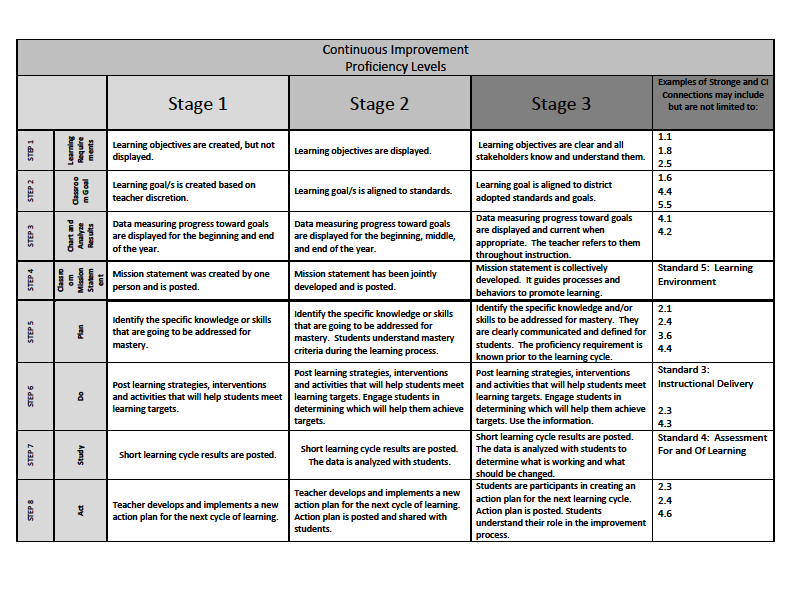In Brief
Onboarding is typically associated with being a process for new hires only to orient them with their new job role, company culture and a lot of paperwork. However, onboarding doesn’t start and end with new hires. Onboarding should also include employees that have longer tenure by addressing their learning and development needs through continuous improvement, professional development opportunities and continuous onboarding.
Summary
- Organizations cannot expect improvement if they do not invest in developing the people spearheading the work.
- Organizations that adopt continuous onboarding see an increase in employee retention.
- Professional development is more than just formal training experiences. Consistent reflection and communication is required to adopt continuous improvement as a culture.
Continuous onboarding through continuous improvement
People want to work in organizations that value their expertise and provide them with opportunities to grow. Long-term plans for keeping employees on board with the organization require a balance of continuous improvement strategies and professional development opportunities. Having a continuous onboarding strategy means that you’re committed to showing your employees, both old and new, that you’re invested in their career through developing a personal and ongoing onboarding path for each of them. Studies have shown that employees will stay longer at a company that invests in their careers.
The School District of Menomonee Falls (SDMF) in Wisconsin has a strong commitment to continuous improvement. This commitment can be seen at all levels in the organization. The district employs adult learning frameworks focused on continuous improvement that support the ongoing development and onboarding of all employees. The model’s multiple proficiency levels and stages provide clear direction for those entering the organization. They also serve to re-recruit and offer new challenges and growth opportunities for returning team members.
Corey Golla, superintendent, and Sue Lee, learning and improvement specialist, explain how the district’s staff development approach is used to continuously onboard employees.
How are the continuous improvement proficiency levels introduced to employees?
The adult learning framework continues to be refined by the leadership team in Menomonee Falls. Proficiency levels are grouped and employees receive hours of formal training. Coaching conversations are immediately introduced as critical for supporting all staff. Corey says that “Beyond the introduction, our leaders speak consistently and often about improvement and the coaching is a constant for our staff.” Sue describes how coaching is integrated in teacher development experiences:
“The adult learning framework is the foundation for beginning coaching conversations. The expectation for teachers new to the district is to show proficiency as measured by meeting stage one in all categories. Veteran staff are moving toward stage three in all areas. More than just scoring teachers, conversations both formal and informal focus on moving from being compliant using the tools and strategies to being committed to the process of continuous improvement.”
How does ongoing training support continuous improvement in the district?
Superintendent Golla describes the value of continuous improvement in the district stating, “We can’t expect improvement if we don’t invest in developing the people that will be on the front lines of the work.” Professional development is more than formal training experiences for district employees. A constant thread of reflection supports the learning of adults and students. “Frequent conversations between coaches and staff, staff and staff and staff and students occur so the process of improvement becomes the culture,” Lee explains. Employees are trained to identify the goal and how they will know if they are successful. Corey adds, “Our mantra is ‘Every employee is a master problem solver’.”
How does ongoing development of staff support re-recruitment of employees?
Trust and collaboration are a cornerstone to the district’s re-recruitment process. Golla explains how these two values define the approach to developing staff:
“If we speak clearly and often about our trust in staff and share that the investment in professional development is intended to develop our best resource—our people—then the development is understood and appreciated. The best employees in any organization want to be challenged and developed professionally.”
The School District of Menomonee Falls serves as a model for what right looks like when it comes to continuously onboarding and valuing employees. Reflect on ways your organization provides growth opportunities for employees. What strategies used in SDMF can help you foster continuous improvement and higher levels of employee retention?
KEY TAKEAWAYS
-
Think differently.
Remember, onboarding continues beyond new employees. What strategies can your organization use that encourages continuous improvement and development with all employees? -
Plan differently.
Support the ongoing development and onboarding of all employees. Use a model like SDMF’s proficiency levels to provide clear direction for those entering the organization. -
Act differently.
Have conversations across your organization so that the process of improvement becomes the culture and employees know they’re successful.

